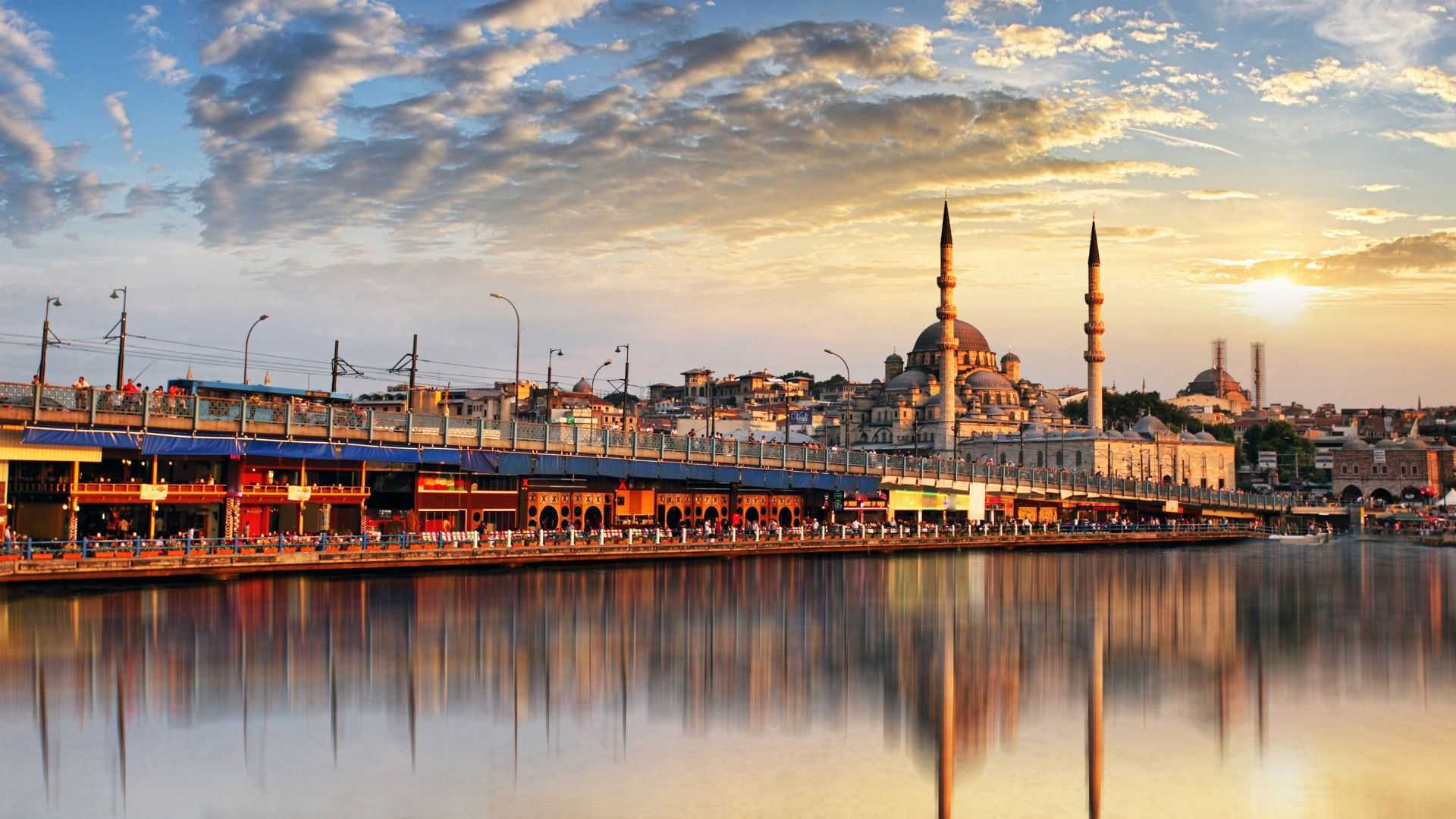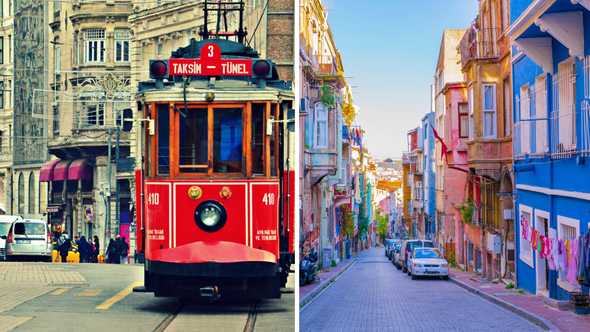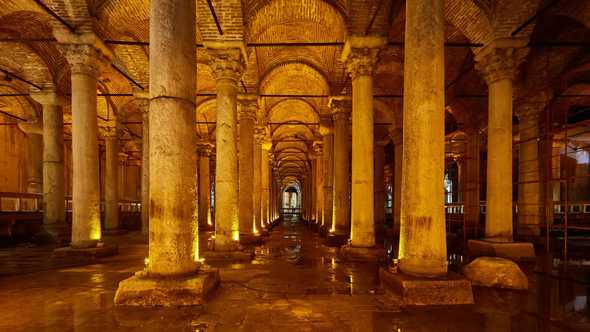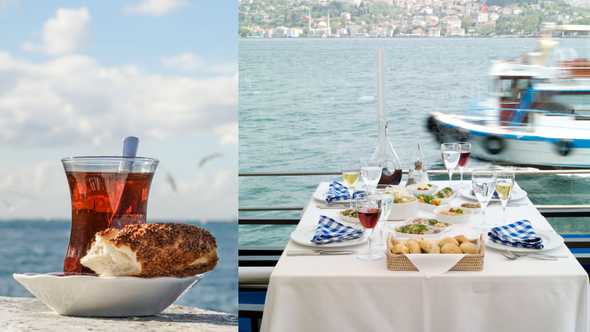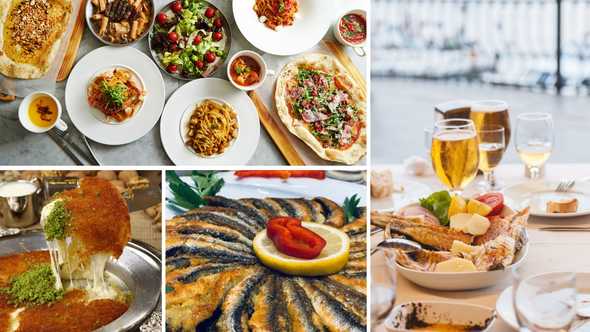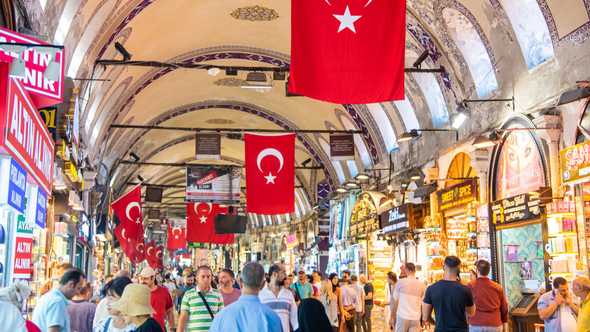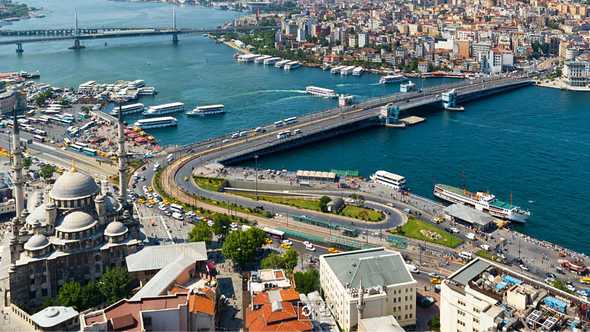Istanbul: Turkish Delight
November 24, 2020
Straddling the Bosphorus Strait and two continents, Istanbul is a city where east does actually meet west. Both historic and modern, it is also Asian and European, and manages to be Islamic yet secular as the same time. Chaotic and confused, yet glorious and intriguing, it was once the capital of three huge historical empires, Roman, Byzantine, and Ottoman, and next year will be the European Capital of Culture.
Founded by the Greeks some 27 centuries ago, Istanbul has been overrun by the Slavs, Russians, Crusaders, Persians, Arabs who have indulged in some name calling; Taxt-e Rum (Throne of the Romans), Tsarigrad (City of the Caesar or Emperor), Dersaadet (Gate of Felicity), Byzantium, and of course, Constantinople, are just a handful.
Today with a population of nearly 16 million, Turkey’s largest city is a sprawling metropolis at the crossroads of Europe and Asia and its warren of winding roads showcase 55 Byzantine churches, 6,800 mosques and seven palaces dating from the Ottoman Empire, mysterious smoke-filled spice bazaars, and a fusion of East and the West. And exploring all of the city’s vast offerings could take many days, if not weeks, so here are some of the must-sees.
On foot is best way to discover the city of hundred names and the place to kick off your wander is Sultanahmet, the historic heart of the Istanbul, and home to all headliners.
Get your historical and geographical bearings with the Hippodrome, a stadium that was the scene of Roman and Byzantine political and sporting life as well as Ottoman royal games and imperial weddings, and a few bloody riots. Very little of the Hippodrome survives today, and the area is now a calm city park called At Meydani (Horse Grounds).
Beneath the northern end of the Hippodrome, is the Sunken Palace Cistern, or Yerebatan Saray Sarniçi, the grandest of the hundreds of cisterns dating back to Byzantine. James Bond fans might remember it from the scene of the spy rowing a small boat through forest of marble columns in the movie From Russia With Love. This huge underground cistern, which measures 70 x140 metres, once held over 80,000 cubic metres of water. Over 336 columns, each 30 feet tall, support the vaulted brick roof, and water was pumped through over 40 miles of aqueducts from a reservoir near the Black Sea.
Above the hidden cistern is the Milion, the zero-mile-marker on the road once called the Mese, the Roman road between Constantinope and Rome, and now known as Divan Yolu.
Across it istheawe-inspiring Hagia Sophia, also known as the Church of the Holy Wisdom or the Aya Sofya in Turkish. First built in the 4th century by Constantine the Great, the first Christian emperor and in whose honour the city was named Constantinople, it was burnt to the ground a couple of times before the present day structure was erected by Emperor Justinian in 532-37. It was the world’s greatest Christian church until the conquest of Constantinople in 1453, when Sultan Mehmet the Conqueror amazed by its beauty converted it into his imperial mosque, covering many of the Christian symbols. In 1934, Ataturk, the father of modern Turkey, turned it into a museum, with symbols of both its Christian and Muslim periods on display. The vastness of the 105-foot dome, towering 184 feet overhead is astounding, and the walls are covered in fine marble, but the exquisite mosaics from the Byzantine era are the most impressive part of the interior. This year, 2020, the Hagia Sophia was converted back into a mosque.
Just beyond the Hagia Sophia is the Topkapi Palace, and the Istanbul Archaelogical Museums, both worth a visit; the former built between 1465 and 1478, the palace was home to 24 of Turkey’s 36 sultans, and the centre of Ottoman might, and now features displays of various sultans’ astounding jewel collections. The Istanbul Archeological Museums hold outstanding collections of art from the ancient Near East, Greece and Rome.
Across the Hippodrome is the cascading domes and the six slender minarets of the Sultan Ahmet mosque, or The Blue Mosque, as they reach for the heavens. Built by Sultan Ahmet 1 in 1619 to rival the Sophia Hagia. Visible from afar, it minarets are it’s most notable features, more so as most mosques have either have one, two or four. One legend tells of how the Sultan directed his architect to make gold (altin) minarets, which was misunderstood as six (alti) minarets. This caused quite a stir as the Haram Mosque in Mecca, the holiest in the world, also had six minarets. Eventually adding a seventh minaret to Mecca’s mosque solved the problem. The mosque gets its name from the 20,000 blue tiles that line the high ceiling inside. Fine examples of 16th-century Iznik designs, they featuring flowers, trees and abstract patterns along with 253 windows of beautiful, decorative stained glass still inspire the faithful.
From the Blue Mosque, the Grand Bazaar, or the Kapali Carsi is a short tram ride away. The oldest and largest covered bazaar in the world,it contains two bedestens(domed masonry structures built for storage and safe keeping), the first of which was constructed between 1455 and 1461 by the order of Sultan Mehmet the Conqueror. Today it covers an area of approximately 31,000 sqms and is home 4,000 shops inside, with another 2,000 outside. In addition to the shops it includes 17 inns, 61 streets, four fountains, 10 wells, two mosques, a police station, and 22 gates and with over 300, 000 visitors daily, it’s like surfing a tide of humanity. On the other hand, this labyrinthine shopping complex of yore, is a treasure trove of pashminas, carpets, spices, leather goods, Turkish water pipes, colourful tiles, beautiful ceramic bowls and plates, Aladdin lamps, gold and silver jewellery.
Another market worth a visit is the Spice Bazaar dating back to the 17th Century, and was the hub for spices from nations in the Far East, such as India and Arabia; curative herbs and remedies for every imaginable ailment were also sold here. Because a majority of the products on sale came through Egypt, it is also known as the “Egyptian Bazaar”. Today it is still is the best place in the city to find spices, herbal teas, and traditional Turkish foods such as Turkish Delight.
No visit to Istanbul is complete without a memorable excursion up the Bosphorus on one of the passenger boats that zigzag along the shores of this winding strait that separates Europe and Asia, offering a delightful mixture of past and present.
Embark at Eminönü and the six-hour trip stops alternately on the Asian and European sides of the strait. During the passage, the boat passes the magnificent Dolmabahçe Palace, with 285 rooms, 43 large salons, a 4,000 kg Bohemian glass chandelier, and a façade nearly half a kilometre long. Other impressive sights on southern end of the Bosphorus is the Selimiye Barracks where(where Florence Nightingale worked) Çiragan Palace, Yildiz Park and Palace, the chic art-boutique-and-cafe scene in the village of Ortaköy, where a church, a mosque and a synagogue that have existed side by side for hundreds of years. Overshadowing all the traditional architecture is one of the world’s largest suspension bridges, the Bosphorus Bridge, linking Europe and Asia.
Beyond the bridge, the sights continue with the Beylerbeyi Palace, a small summer residence residence, Arnavutköy with its photogenic Otthoman yalis (wooden seaside mansions), Rumeli Hisari (the mighty Fortress of Europe),Anadolu Hisari (the fortress of Anatolia), Küçüksu Kasri (a fine little rococo palace), and Hidiv Kasri (fine Art Nouveau villa of the Khedive of Egypt).
The poet Lamartine once said of Istanbul that, “There, God and human, nature and art are together, they have created such a perfect place that it is valuable to see.” And there is no better way to describe this city that embraces Asia and Europe.

